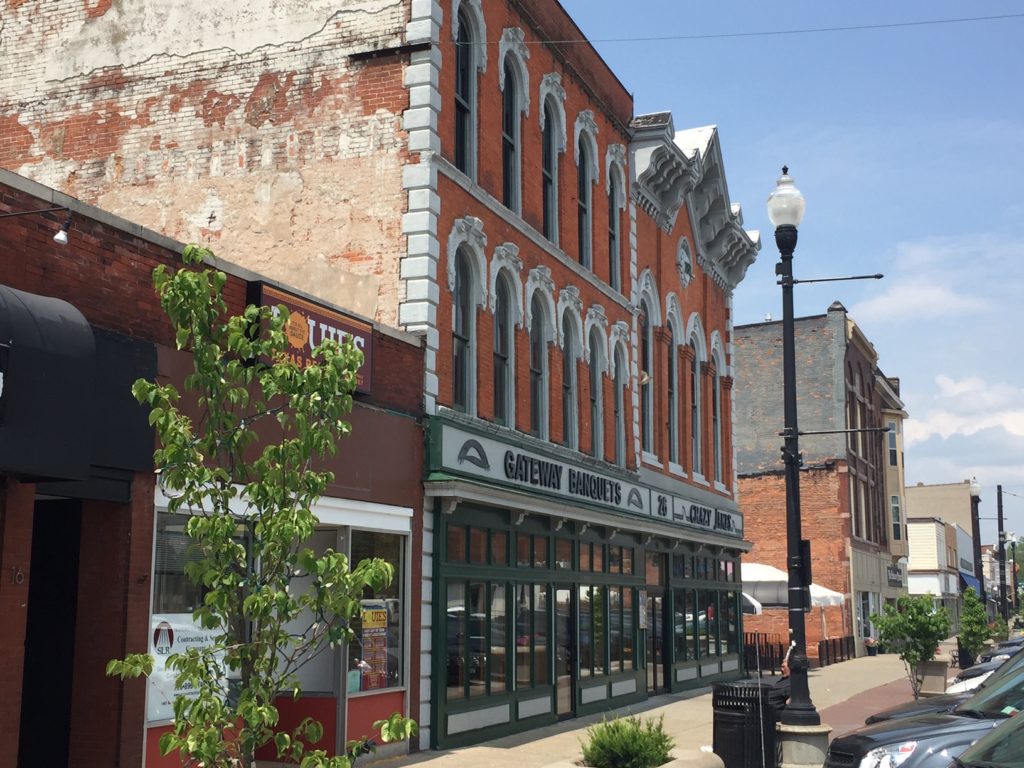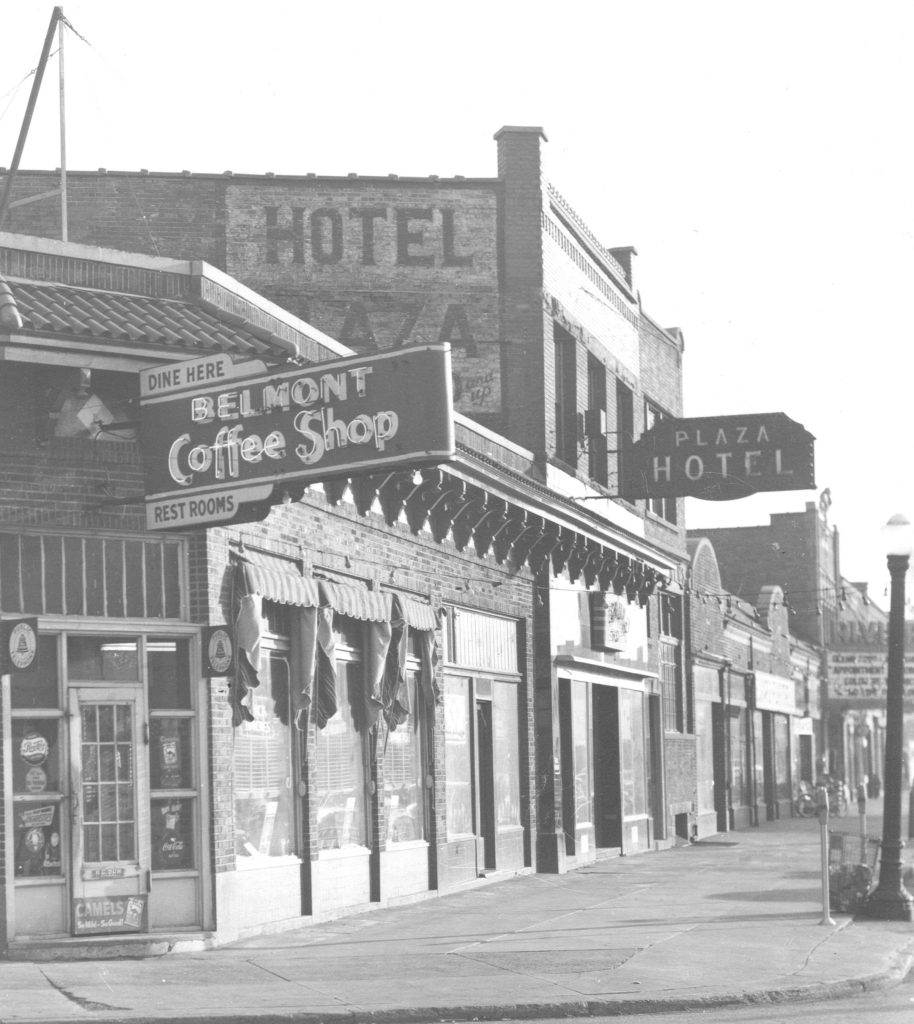Remington Rand Complex 10/3/19
The Remington Rand Complex has quite the history. Currently, the complex is home of the Remington Lofts and Remington Tavern Seafood Exchange. Remington Tavern is one of Western New York’s hottest eateries, with seating either inside or outside with sweeping views of the Erie Canal. Their menu consists of a variety of seafood including a raw bar of oysters, clams, crabs and lobster, in addition to various cuts of steak.
Taking a step back in history, this complex used to be many different things. The red-brick building at 184 Sweeney St. was built in 1895 as a trolley barn and powerhouse for the Buffalo and Niagara Falls Railway. It later housed the Herschell Spillman carrousel manufacturing company and then the Remington Rand Printing plant. (http://niagarafallsreporter.com/kostoff87.html)
In 1899 it became the factory of a new company formed by Allan Herschell along with his brother-in-law Edward Spillman. The Herschell-Spillman company bought out Armitage-Herschell in 1903 and became the largest manufacturer of carousels in the United States.
In 1915 Allan Herschell retired from the company and formed a new company by the name of Allan Herschell Co. on the site of the home of the Herschell Carrousel Factory Museum on Thompson Street.
Jumping ahead to 1951, Remington Rand, an office equipment manufacturer, bought the complex. Remington Rand is known to have produced the world’s first mainframe computer for the U.S Census Bureau there but mostly utilized the building to manufacture typewriters. The building closed in the 1970’s. (https://www.preservationready.org/Buildings/184SweeneyStreet)
Today, the beautiful 9,000 square foot historic factory space is the anchor of the signature Remington Lofts, completed in 2012 by local developer Anthony Kissling. The Remington Lofts includes 79 upscale luxury lofts with an industrial feel yet modern amenities, The Remington Rand complex stands as a spacious, modern, renovated and casual atmosphere with a restaurant along the shores of the Erie Canal.
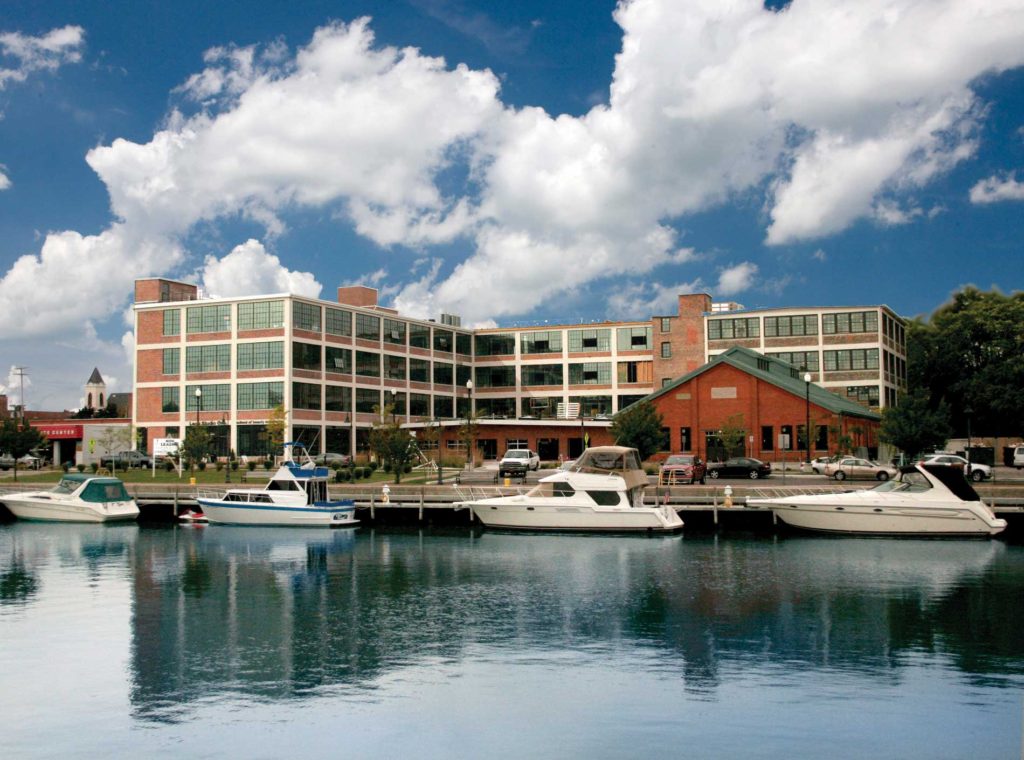
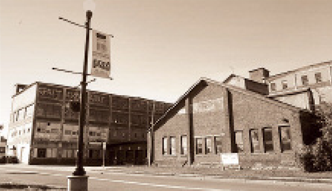
River’s Edge Apartments 9/19/19
The River’s Edge Apartments, located in North Tonawanda, are known for their beautiful view of the Niagara River. The apartments and houses have many great features for residents to enjoy, such as outdoor grilling areas, pickle-ball court, playground, a dog park and so much more. It’s amazing how quickly these complexes came together. 600 River Road was truly turned inside out. What did it used to be though? In 1872, iron was first produced at this location by the Niagara Furnace Company. A year later, the production process stopped and Tonawanda Iron & Steel purchased and updated the plant. Lots of workers were drawn to the plant. Unfortunately, due to poor management, the furnaces were stopped again in 1912. The area stayed vacant until 1922 when it was purchased by Tonawanda Iron Corp. This iron corporation was one of the largest manufacturers of pig iron. (nt.history.com) Who knew? Tonawanda iron produced approximately 3,000 rail car loads of pig iron each year.
As of 2019, a modernized and beautiful set of apartments sit on the very area where iron used to be produced. The River’s Edge apartments keep the waterfront looking great and gives residents a cozy living space to relax. Overall, the city of North Tonawanda is grateful for the completion of the 600 River Road apartments and houses. One more step towards city revitalization.
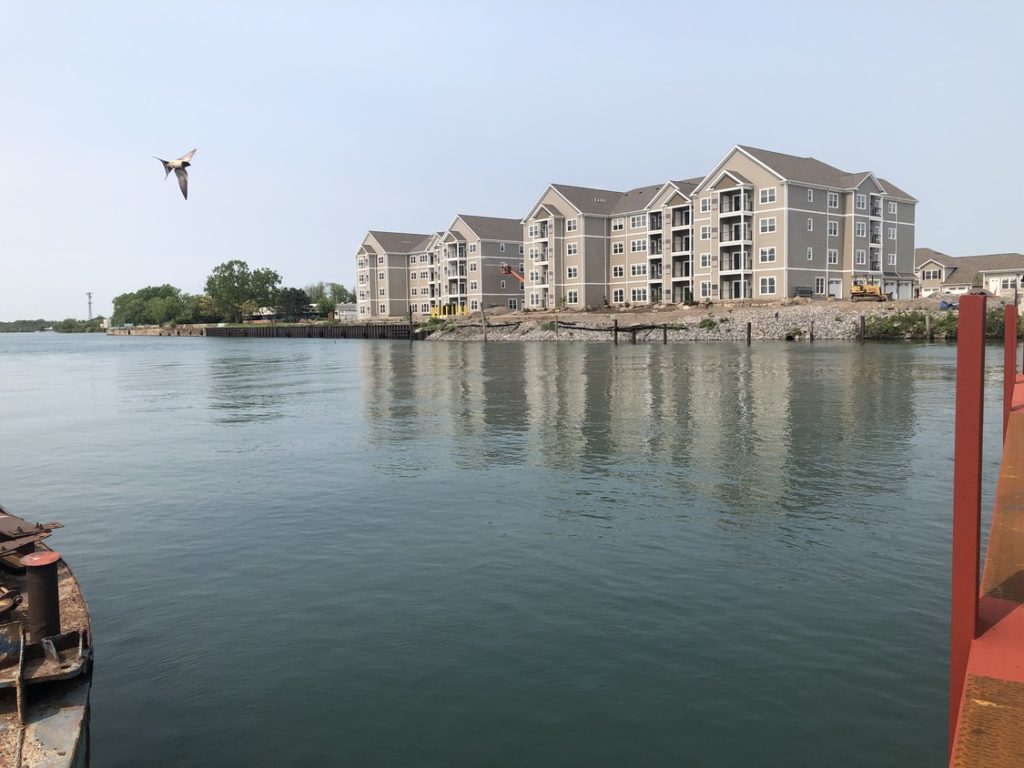

Wurlitzer Building 9/5/19
The Wurlitzer building, located in North Tonawanda, has quite the history. We know it today as home to retail and office spaces, Platters Chocolates, Woodcock brothers and more. The question is, what was the Wurlitzer like when it was first built?
In 1856, Franz “Rudolph” Wurlitzer emigrated from Europe to Cincinnati and established the Rudolph Wurlitzer Company as a reseller of various types of organs — hurdy-gurdies, barrel organs and the like — made by the deKleist Musical Instrument Manufacturing Company, located in North Tonawanda in upstate New York. A half century after the company’s startup, Wurlitzer’s son Howard purchased Eugene deKleist’s company, and the newly renamed Rudolph Wurlitzer Manufacturing Company soon became known for creating the “Best Musical Instruments in the World.” (thewurlitzerbuilding.com)
Following the 1908 acquisition, Wurlitzer moved one of its three busy manufacturing facilities into deKleist’s old building in North Tonawanda and immediately began enlarging operations. With expansion and the addition of a giant WURLITZER sign, the building became the company’s main manufacturing plant and a beloved symbol of local enterprise. Until it closed in 1975, the building manufactured varied musical instruments, including the “Mighty Wurlitzer Theater Organ,” as well as phonographs, jukeboxes and keyboards. The structure was expanded several times in the early 1900s, eventually encompassing an area of roughly 750,000 square feet, including a three-story building and a single-story facility. By the mid-1970s, after manufacturing operations seized, the Wurlitzer Building was slated for demolition. After sitting vacant for years, the building slowly began to decay.
Tom Austen, the current owner of the Wurlitzer Building, shares some more details about the building in an interview. “The first building was in 1892 and the tower was constructed in 1923.” The building used to be a street organ manufacturing company. The Wurlitzer made many musical instruments, such as the famous “Mighty Wurlitzer Organ.” Austen explains that around the late 1930s, the Wurlitzer started making jukeboxes. Of course since the building was so popular for its beautiful musical instruments, it needed as much help as it could get. Austen states, “The Wurlitzer building employed over 3,000 people.” Eventually great things come to an end. In 1978, the Wurlitzer Organ Factory went out of business. “In 1979, my family bought the empty complex,” Austen explains, “my wife and I bought the building in 1992 and have been rehabbing it ever since.” The Wurlitzer building is not only full of great history, but it is now home to many great businesses that bring joy to those who visit the Wurlitzer.
Thank you for reading Ntmomentums’ first NowandThen “Throwback Thursday” post. See below for the then and now photos of the Wurlitzer.
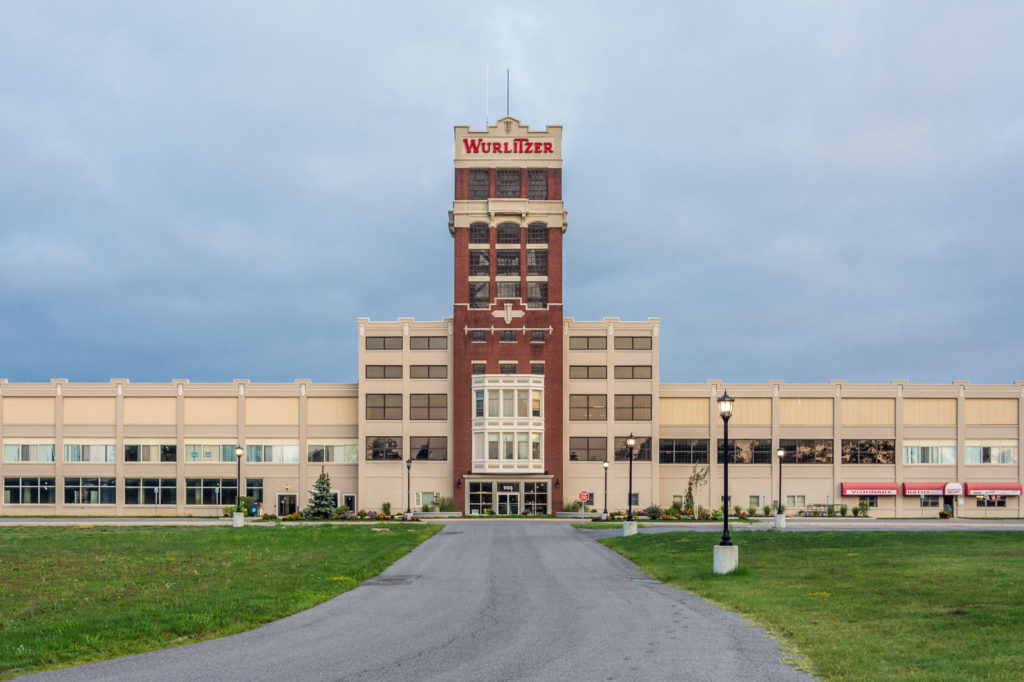
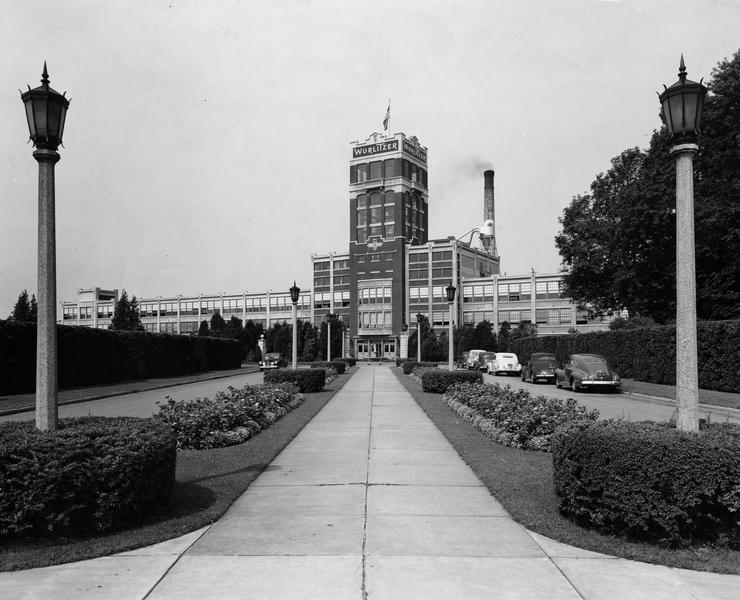
Photos obtained from https://www.thewurlitzerbuilding.com/gallery/wurlitzer
Webster Street 12/11/19
Webster Street is the heart of downtown North Tonawanda. At the turn of the 20th century the Tonawanda’s were the gateway port to the Erie Canal and Great Lakes and Webster Street sat at the center of this bustling business district. A street car line ran down the center of the brick street, hotels towered over Webster, and myriad businesses opened and thrived off of the constant stream of commerce flowing down the Canal.
Over the decades of the mid-twentieth century Webster Street slowly declined as people and businesses began moving away from the traditional city downtowns. Luckily, much of the historic architecture and charm of Webster Street stayed intact over the years. Beginning in the early 2000’s a slow renaissance in downtown North Tonawanda began to build. New restaurants and businesses opened, historic buildings were renovated, and Webster Street slowly grew into a hub of activity on the Erie Canal once again.
Today, Webster Street continues to grow and is becoming known throughout western New York for its shops, restaurants, night life, and small town charm. Anchored by the historic Riviera Theatre and with new investment and developments happening all around, Webster Street’s future as the heart of a thriving downtown is once again bright.
